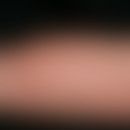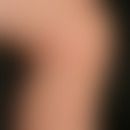Synonym(s)
DefinitionThis section has been translated automatically.
Benzocaine (ethyl 4-aminobenzoate) is a local anaesthetic of the ester type (see below local anaesthetics) with the molecular formula C9H11NO. Benzocaine is used for surface anaesthesia with fast onset of action, the substance has a relatively short duration of action.
Pharmacodynamics (Effect)This section has been translated automatically.
Benzocaine, like all Na+ blockers, leads to a blockade of the voltage-dependent Na channels. The influx of sodium into the nerve fibre is inhibited, the formation of an action potential is prevented. The onset of action is 1 minute and the duration of action about 10 minutes.
You might also be interested in
IndicationThis section has been translated automatically.
With great restriction with frequent sensitization! Sore throat, ischialgia, lumbago, pruritus, dermatitis solaris, bee sting/wesping, mosquito bite, flea bite, symptomatic treatment of haemorrhoids.
Benzocaine can also be applied to the penis. The aim here is to reduce the sensations through the anaesthetic effect in order to prevent premature ejaculation. Benzocaine is commercially available for this purpose as a so-called "delay cream". The anaesthetic usually sets in after about 1 minute, but often begins to subside after 10 minutes.
Notice! Because of the frequent allergic reactions, this is a dubious therapeutic principle!
Limited indicationThis section has been translated automatically.
Dosage and method of useThis section has been translated automatically.
- Apply solutions several times a day for inflammation of the oral mucosa.
- Ointments/creams/gels: For pruritus apply several times a day.
- Hemorrhoid ointments: Apply thinly in the anal area 2-3 times/day.
- Suppositories for the treatment of haemorrhoids: 1-3 times/day a suppository after bowel movement.
Standard concentrationThis section has been translated automatically.
- Solutions: 0,75%.
- Water absorbing ointments (absorption bases)/hydrophilic ointments/hydrophilic creams (W/O emulsion ointments)/hydrophilic gels: 5-20%.
- Haemorrhoid ointments: 2%.
- Suppositories for haemorrhoid treatment: 10%.
Undesirable effectsThis section has been translated automatically.
Allergic reactions including anaphylactic shock, contact allergy, allergy, methemoglobinemia.
ContraindicationThis section has been translated automatically.
PreparationsThis section has been translated automatically.
Anaesthesia, Dolo-Dobendan solution, Eulatin® N ointment
LiteratureThis section has been translated automatically.
- Artüz F et al (2015) Contact sensitisation in patients with chronic leg ulcers. Int Wound J doi: 10.1111/iwj.12442
- Arshdeep, De D et al (2015) Does contact allergy to benzocaine cause orodynia? Indian J Dermatol Venereol Leprol 81:84-86
- Bauer M et al (2015) A double-blind, randomized clinical study to determine the efficacy of benzocaine 10% on histamine-induced pruritus and UVB-light induced slight sunburn pain. J Dermatologist Treat 11:1-6
- To D et al (20145) Lidocaine contact allergy is becoming more prevalent. Dermatol Surgery 40:1367-1372





